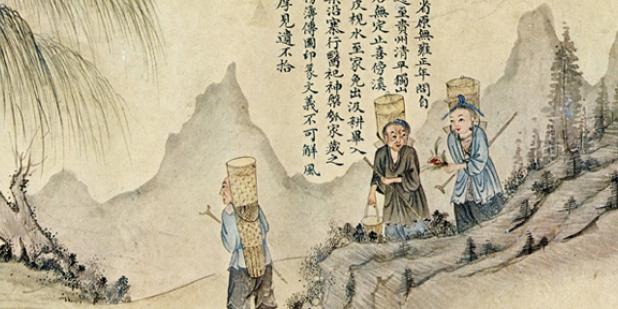Happy Lunar New Year from the USC US-China Institute!
The Afterlives of Han Historiography
As part of their Taiwan Studies Lecture Series, the UCLA Center for Chinese Studies presents a presentations by Tamara Chin (Associate Professor of Comparative Literature, Brown University) and by Michael Wang (Distinguished Research Fellow, Institute of History and Philology, Academia Sinica) offering examples of the use of Han historiography to locate minority people within the nation and places within and beyond China as constituents of a larger world in which China figures prominently.
Where

Taiwan Studies Lecture Series
Chinese classical texts have long provided a repertoire of narratives, arguments, and logics from which later perspectives on people and places have been constructed. Issues of social identity within China and the country’s relationships to spaces through which its borders have been drawn have been important projects that have accompanied the more familiar construction of national identity and territory. Presentations by Tamara Chin (Associate Professor of Comparative Literature, Brown University) and by Michael Wang (Distinguished Research Fellow, Institute of History and Philology, Academia Sinica) offer examples of the use of Han historiography to locate minority people within the nation and places within and beyond China as constituents of a larger world in which China figures prominently. The discussion will be moderated by Richard Von Glahn (Professor of History, UCLA).
Han Historiography in the Modern Construction of the Silk Road
Tamara Chin
Since the 1980s, the term Silk Road has had a popular and academic appeal, suggestive of an era of premodern globalization in which China played a central role. This talk introduces the modern idea of the Silk Road as a term first coined in 1877 by a German geographer who sought to extract scientific data from Chinese classical texts while mapping a railway route between China and Europe. The talk gives a 100-year sketch of the translations and appropriations of the term—as well as the transformation of its associated classical narratives—through Republican China, and in the diverse diplomatic discourses after the 1955 Afro-Asian Bandung Conference and Nixon’s 1972 visit to China. Two sets of questions will be explored through this account: first, how did specific Chinese classical texts, especially the Han dynasty Shiji (Records of the Grand Historian) and the Hanshu (History of the Former Han) acquire new global significance? What modes of reading and comparison were used when they were brought into conversation with non-Chinese classical traditions and with geographical science? And second, how has the idea of the Silk Road performed different heuristic functions across different academic disciplines (e.g., literary studies, art history, economic history)? Is a more defined or institutionalized field of Silk Road studies desirable?
The Legend of Panhu: Representation and Reality
Michael Wang
The legend of Panhu, the story of a heroic dog who married the emperor’s daughter, first appeared in China’s classical works of the second century. In the Book of Later Han, one of the “standard histories” (zhengshi) of China which was compiled in the fifth century, this legend was applied to explain the origins of various barbaric tribes living in the southern fringe of central dynasties’ domination. After the seventh century, following the increasing growth of the central dynasties’ political, economic and cultural influences, many non-Han ethnic groups in southern China have begun to claim their “offspring of Panhu” identity. The talk explains how and why authors of central dynasties had created and represented the legend for identifying “others” over a long period and wide space, and how and why various natives in China’s southern frontiers accepted and modified the legend of Panhu (and his royal wife), and represented the story through oral tradition, pictures, specific writing genre, religious rituals and now internet websites, from about the 5th century through to the present day. The discussion will be focused on the relations between representation and reality, and that between structured representation (such as the legend represented in a specific genre) and structured reality (such as an enduring human ecology and the related vulnerable situation of some minority groups in southern China).
Image: "Picture of the Yao People" (瑤人), from Eighty-two Aboriginal Peoples of Kweichow Province in Pictures 《苗蠻圖冊》, ed. Ruey Yih-fu (Taipei: Academia Sinica, Institute of History and Philology, 1973). Used with the publisher's permission.
Sponsor(s): Center for Chinese Studies, Asia Institute, Program on Central Asia, UCLA Dean of Humanities, Taipei Economic and Cultural Organization in Los Angeles
Featured Articles
We note the passing of many prominent individuals who played some role in U.S.-China affairs, whether in politics, economics or in helping people in one place understand the other.
Events
Ying Zhu looks at new developments for Chinese and global streaming services.
David Zweig examines China's talent recruitment efforts, particularly towards those scientists and engineers who left China for further study. U.S. universities, labs and companies have long brought in talent from China. Are such people still welcome?






